Key takeaways:
- Dyslexia significantly impacts emotional well-being and social interactions, necessitating supportive, inclusive environments.
- Observation is a vital assessment tool, revealing insights about students’ strengths and emotional states beyond standardized testing.
- Utilizing various methods, including anecdotal records and video, enhances understanding of dyslexia symptoms and students’ experiences.
- Collaboration among educators enriches the analysis of observation data, leading to more effective intervention strategies for students.
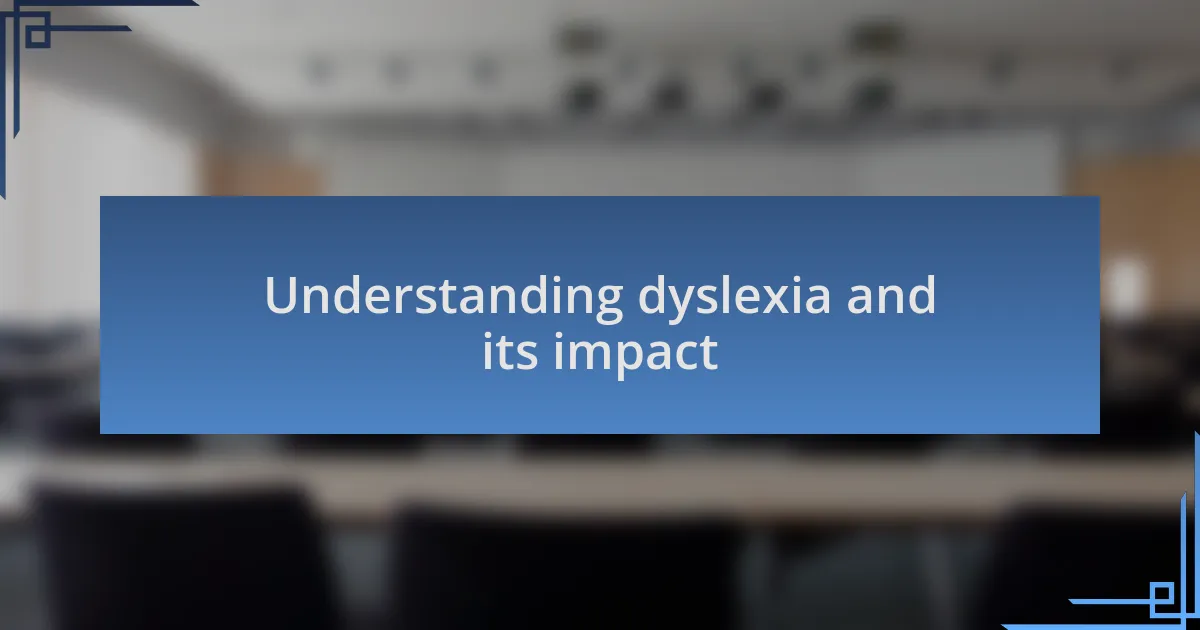
Understanding dyslexia and its impact
Dyslexia isn’t just a challenge in reading; it affects how a person processes language, often leading to frustration and a sense of inadequacy. I remember working with a student who adored storytelling but dreaded writing it down. This conflict between their creative mind and the struggle with text created deep emotional turmoil, highlighting how dyslexia can impact self-esteem and motivation.
The impact of dyslexia goes beyond academics; it can influence social interactions and relationships, too. Have you noticed how easily we often overlook the daily struggles of those with learning differences? For instance, a friend of mine, who has dyslexia, felt isolated during group activities in school. The embarrassment from reading aloud made her withdraw, showcasing how vital it is to create inclusive environments that embrace diverse learning styles.
Understanding dyslexia requires empathy and awareness of its far-reaching effects. I’ve frequently encountered parents who feel helpless when their children face difficulties, grappling with a blend of concern and frustration. This emotional rollercoaster is common; it emphasizes the need for compassionate support systems that acknowledge these challenges while celebrating each individual’s unique strengths.
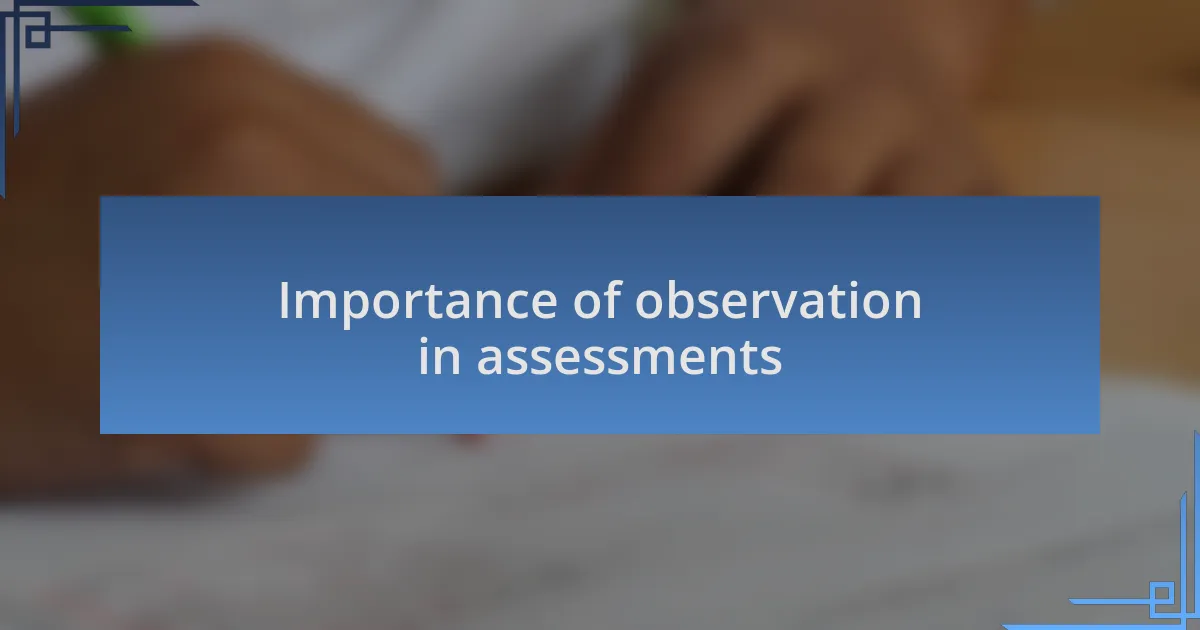
Importance of observation in assessments
Observation plays a crucial role in assessments, especially when evaluating individuals with dyslexia. I once observed a child during a reading exercise, noticing their unique strategies for decoding words; it was fascinating to witness how they approached challenges with creativity. This firsthand insight revealed far more than standard tests could, emphasizing the significance of observation over mere numbers.
When I think about assessments, I often reflect on a specific instance involving a group session. I noticed one student silently withdrawing while others participated actively. This observation raised questions about their comfort level and confidence, reminding me that assessments are not just about academic skills but also about understanding a student’s emotional and social well-being.
I’ve found that careful observation can uncover hidden strengths and areas needing support. For instance, during informal interactions, I noticed a learner thriving in discussions despite struggling with written tasks. This highlighted for me how essential it is to assess not just what is apparent but also the underlying abilities that can guide effective intervention strategies. How do we truly measure success if we’re only looking at traditional metrics? The answer lies in a comprehensive approach that incorporates observation as a key tool in understanding the whole child.

Methods of observing dyslexia symptoms
To observe dyslexia symptoms effectively, I often utilize anecdotal records, which allow me to capture specific behaviors in real-world contexts. For example, during a dictation exercise, I noticed a student misspelling simple words multiple times while accurately copying sentences from the board. This contrast not only caught my attention but also prompted me to reflect on the underlying processing challenges that could be at play.
Another method I frequently employ is video recording sessions to review later. I vividly remember recording a session where a student struggled to read aloud, often skipping lines and losing their place. Watching this footage later allowed me to notice subtle cues, such as their body language and facial expressions, offering deeper insights into their frustration and anxiety. Isn’t it powerful how technology can enhance our understanding?
I also engage in informal conversations with students about their reading experiences. Once, I had a heartfelt discussion with a young learner who described the overwhelming emotions she felt when she made mistakes in front of her peers. These conversations highlight that behind dyslexia symptoms are complex feelings, which can often illuminate the reasons for certain behavioral patterns. How can we foster a supportive learning environment without understanding these emotional layers? It’s clear that observation involves more than just watching; it’s about connecting with the individual on a personal level.
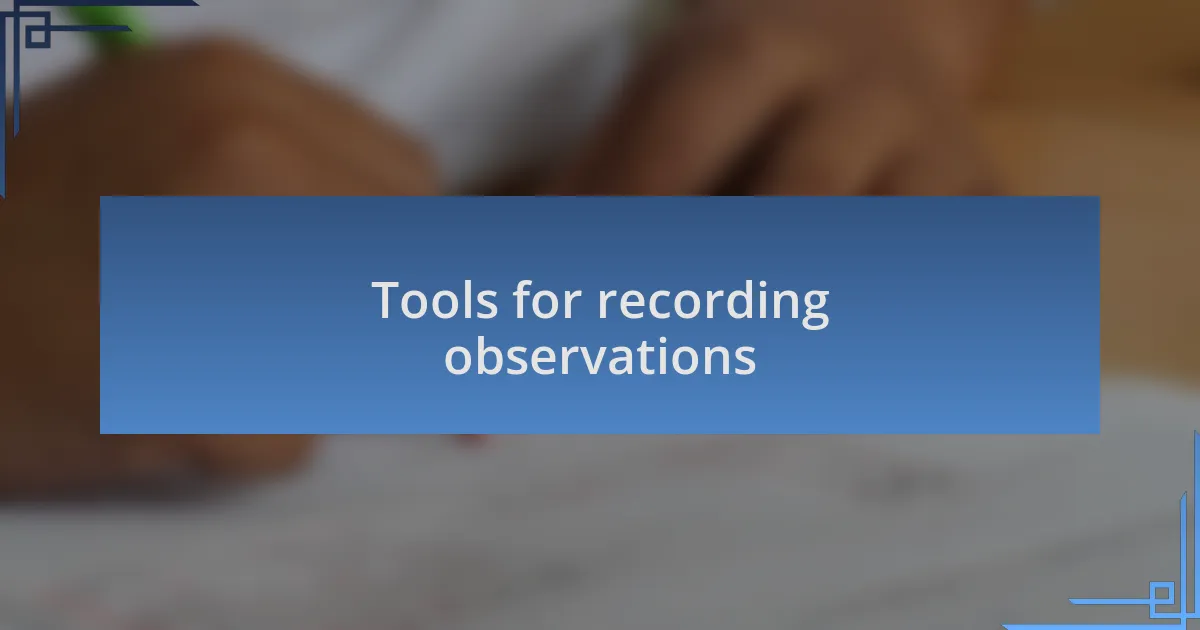
Tools for recording observations
When it comes to recording observations, I frequently turn to note-taking apps designed for educators. I remember a particular instance when I used one to document a student’s reading progress over several weeks. The app allowed me to organize my notes by date and subject, which made it easy to spot trends in the student’s behavior. This way, I was able to categorize important information quickly and reflect on it later. Have you ever tried digital tools for organization? It can truly streamline the observation process.
Another valuable tool I’ve found is using checklists during assessments. I recall a time when I created a customized checklist for a reading intervention session. Each point was tied to specific dyslexia symptoms, such as phonemic awareness and decoding skills. While working directly with the student, I could quickly mark off areas of success or concern, giving me immediate feedback to adjust my approach. This method not only kept me focused but also fostered a collaborative environment where the student felt engaged in tracking their own progress.
I also enjoy utilizing sketch notes, which allow me to integrate visual elements with my observations. While observing a group activity, I started doodling key points—like the types of errors students made—combined with their emotions at that moment. For example, I drew a small cloud with rain when one student became visibly frustrated trying to read a passage. This visual representation helped me re-engage with the emotional aspect of learning and provided a reference for our future sessions. How often do we consider the power of combining art with data in our assessments? It can create a richer understanding of the learning experience.
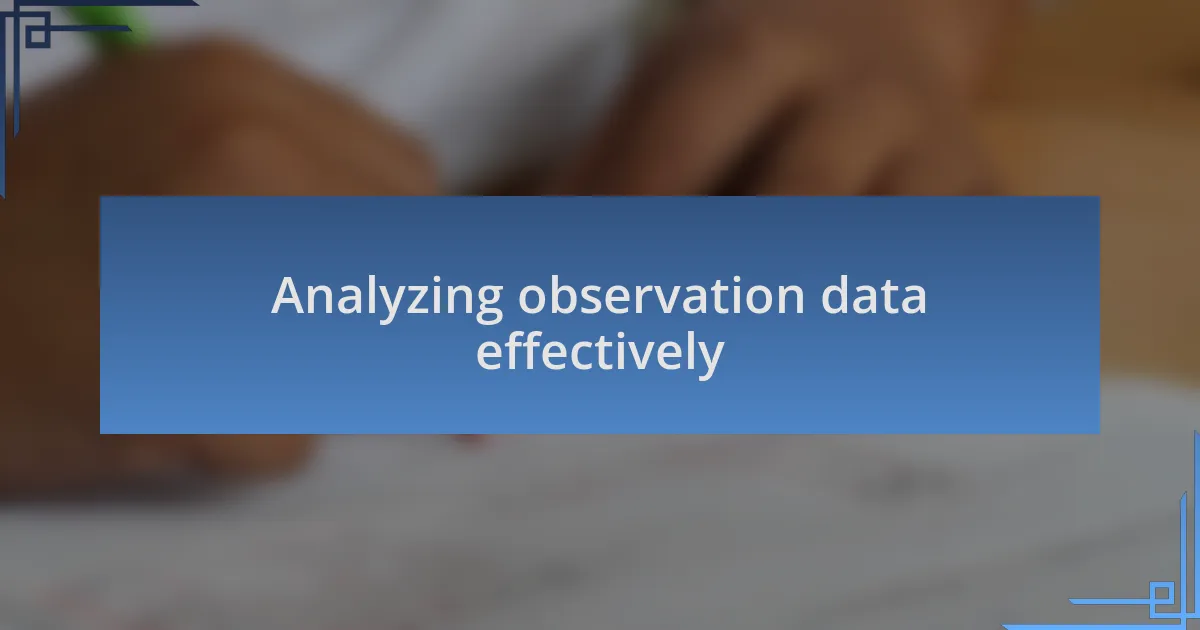
Analyzing observation data effectively
When analyzing observation data, I find it incredibly helpful to look for patterns that reveal a student’s unique learning profile. For instance, while reviewing notes, I noticed a student often struggled with specific letter combinations. By highlighting these instances, I could tailor my strategies to focus precisely on those problematic areas. Have you ever spotted a recurring theme in your observations that led to a breakthrough? It’s rewarding to see how targeted interventions can yield significant progress.
I often take time to reflect on the emotional context surrounding the data as well. For example, in one assessment, I realized that a student’s anxiety spikes during timed reading tasks. This insight prompted me to experiment with untimed assessments, leading to a noticeable improvement in their performance. It’s essential to consider not just the numbers or checkboxes, but also the emotions tied to learning. Do we always acknowledge the emotional landscape while compiling our observations? I believe this is a crucial aspect that can deepen our understanding.
Finally, collaboration plays a vital role in effectively analyzing observation data. In one team meeting, we shared our individual findings about a specific student, and together we painted a clearer picture of their needs. By pooling our insights, we identified strategies that none of us might have considered alone. This collaborative spirit has not only enriched my own perspective but also fostered a stronger support network for the students. How often do we tap into our collective wisdom for better outcomes? It’s an approach that can transform individual observations into powerful action plans.
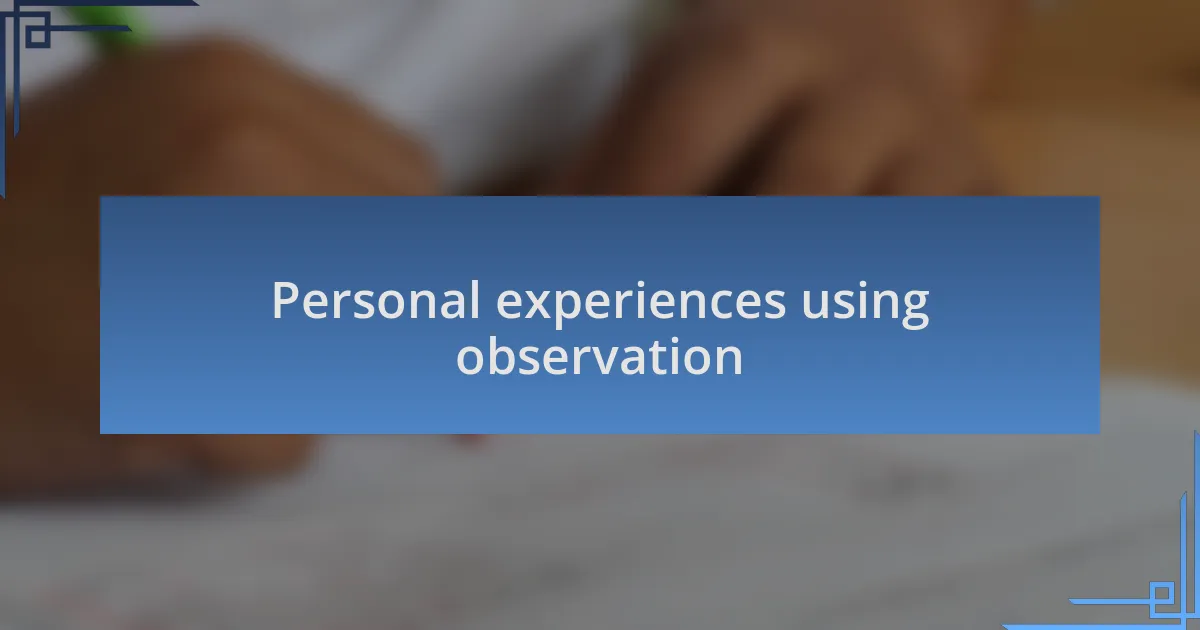
Personal experiences using observation
In my experience, observation has often revealed the quiet struggles that students face daily. I remember one student who appeared disengaged during lessons, yet through careful observation, I noticed he thrived when discussing topics related to his interests, like animals. This simple realization transformed my approach, allowing me to integrate his passions into our sessions and reignite his enthusiasm for learning. Have you ever uncovered a hidden passion that changed your teaching strategy?
I’ve also seen how insightful observations can connect learning with emotions. There was a moment when I was observing a group activity and noticed one student getting visibly frustrated while others moved ahead effortlessly. I took a gentle approach, inviting him to express his feelings, which not only built trust but also helped me understand the specific challenges he faced in processing instructions. This experience taught me that observation isn’t just about identifying academic difficulties but also recognizing emotional cues that inform our teaching.
One particularly memorable instance was while observing a reading session. I noted a student’s reaction to different reading materials: she beamed at storybooks but visibly shrank when faced with informational texts. This observation inspired me to curate a mix of genres that balanced her interests with the necessary skill-building, ultimately making her reading practice both enjoyable and effective. Have you ever tailored your approach based on such nuanced observations? It truly reinforces the idea that observation is a powerful tool in fostering more personalized learning experiences.